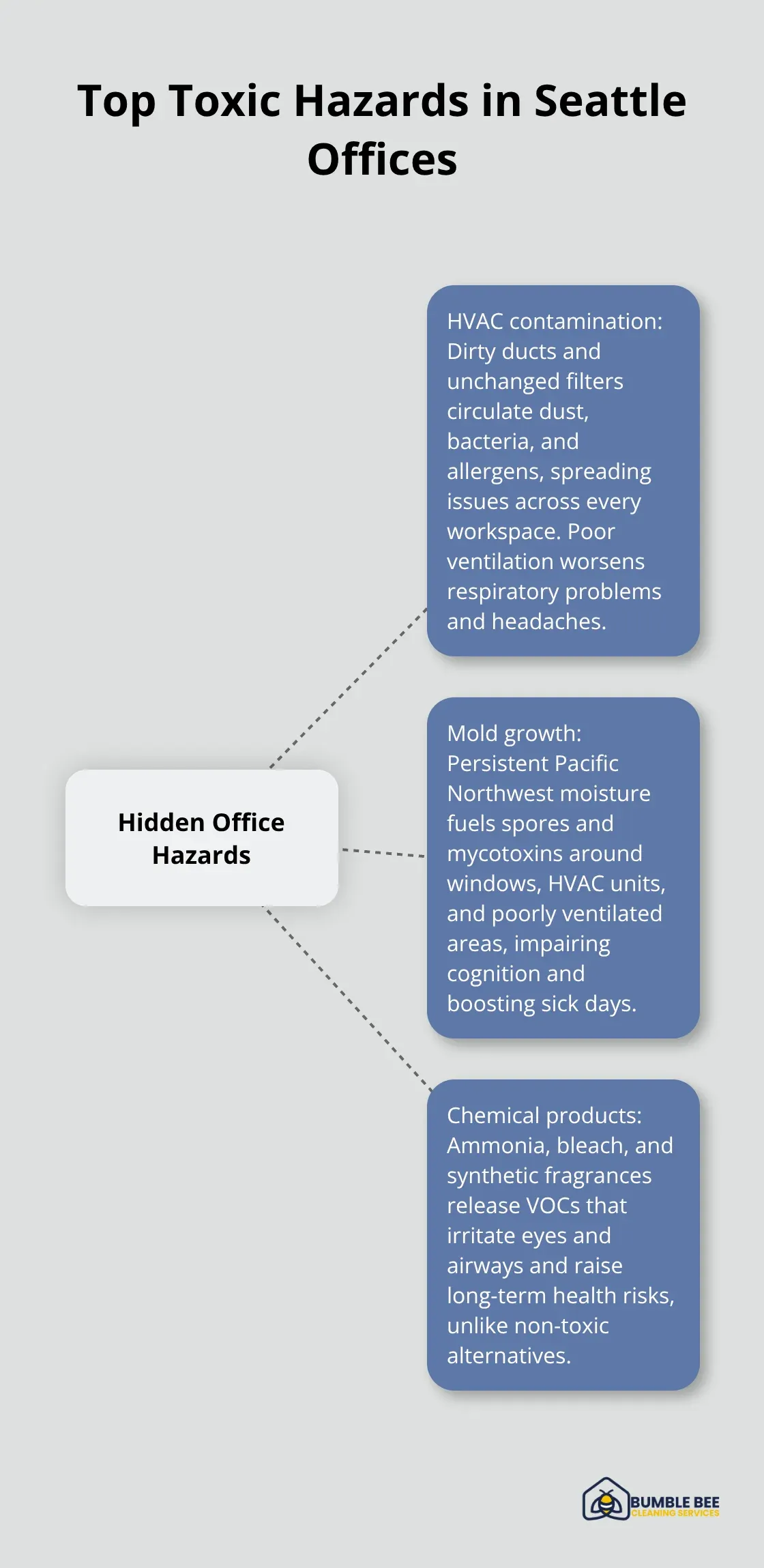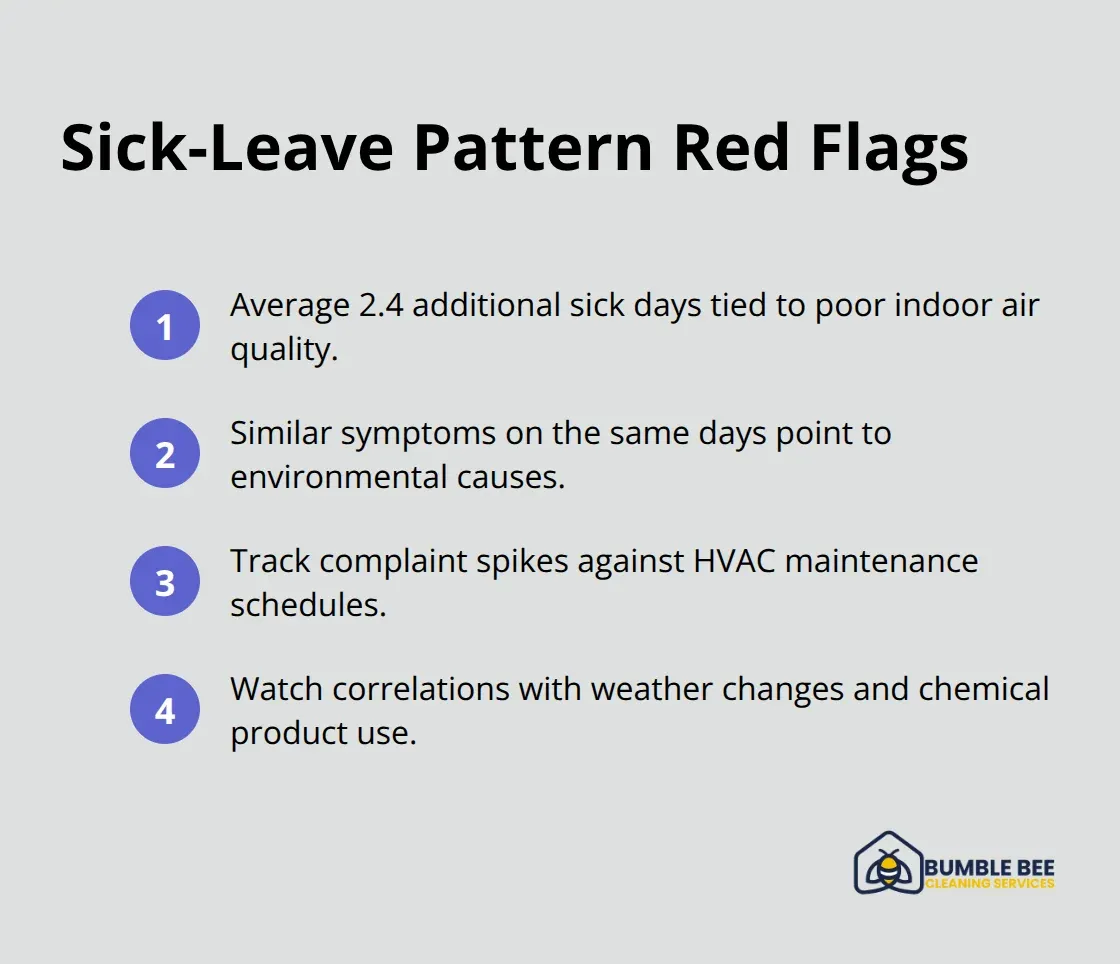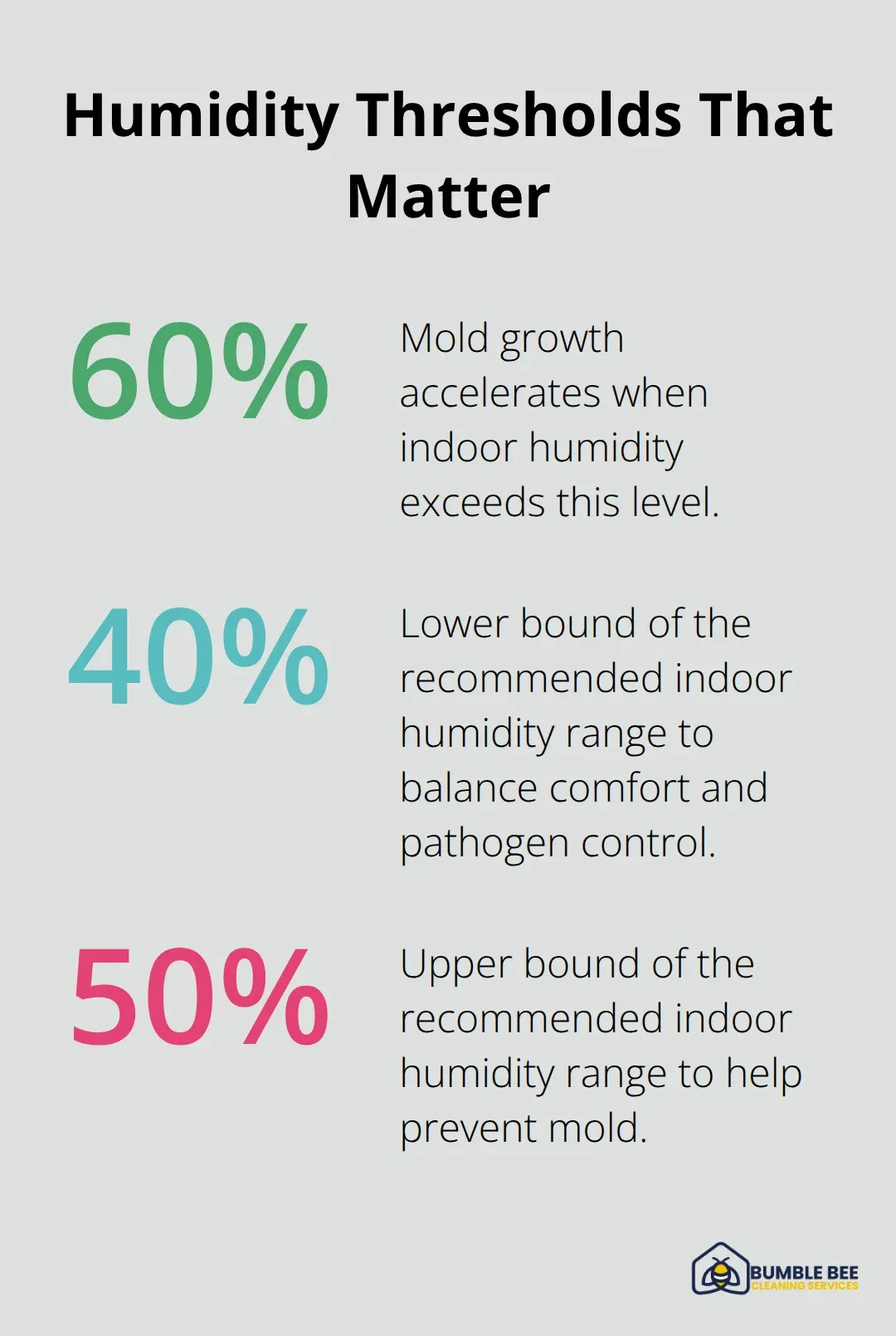Your Seattle office might be silently harming your team’s health. Poor air quality, hidden mold, and toxic cleaning chemicals create invisible threats that lead to more sick days and decreased productivity.
We at Bumble Bee Cleaning Services see how contaminated workspaces affect employee wellbeing daily. Professional commercial disinfection and proper maintenance can transform your office into a healthier environment where your team thrives.
What Toxic Hazards Hide in Your Seattle Office
HVAC Systems Spread Contaminated Air Throughout Buildings
Your office HVAC system acts as the worst culprit for illness transmission. The EPA found that indoor air contains pollutants from sources inside buildings, and Seattle offices face unique challenges with year-round humidity and limited ventilation. Dirty air ducts collect dust, bacteria, and allergens that flow through every workspace. HVAC filters become microorganism colonies when offices leave them unchanged for months, which triggers respiratory problems and headaches. Seattle’s tech companies report higher sick leave rates in buildings with poor ventilation systems compared to those with regular HVAC maintenance.

Pacific Northwest Humidity Creates Perfect Mold Conditions
Seattle’s consistent moisture levels create ideal mold growth conditions that most office managers completely ignore. Mold spores multiply rapidly when humidity levels exceed 60%, and Seattle offices regularly surpass this threshold. Some molds produce toxic substances called mycotoxins, particularly around windows, HVAC units, and poorly ventilated spaces. Hidden mold behind walls and under carpets releases toxins that cause chronic fatigue, difficulty with concentration, and cognitive impairment. Employees who work in moldy environments take more sick days than those in properly maintained buildings, according to recent workplace health studies.
Chemical Products Poison Indoor Air Quality
Traditional cleaners release volatile organic compounds that accumulate in poorly ventilated offices and create a toxic mixture your employees breathe daily. Ammonia-based cleaners, bleach, and synthetic fragrances cause immediate symptoms like eye irritation and headaches, plus long-term health risks. The CDC links chemical exposure from these products to increased asthma rates and respiratory sensitization among office workers (with symptoms often mistaken for seasonal allergies). Non-toxic alternatives eliminate these health risks while they maintain superior cleanliness standards.
These hidden hazards silently damage your team’s health every day, but poor commercial hygiene can spot the warning signs before they become serious problems.
How Do You Know Your Office Makes Employees Sick
Sick Leave Patterns Reveal Office Health Problems
Your employees’ sick day patterns tell a clear story about office air quality. Following record-breaking air quality impacts, the Washington State Department of Labor and Industries initiated permanent monitoring programs to track workplace health effects. Workers exposed to poor indoor air quality average 2.4 additional sick days per year according to EPA workplace studies. Multiple employees report similar symptoms on the same days, which signals environmental contamination rather than contagious illness. Track when respiratory complaints spike in your office – patterns often correlate with HVAC maintenance schedules, weather changes, or chemical product usage.

Physical Symptoms Point to Environmental Contamination
Headaches, fatigue, and eye irritation affect office workers in buildings with inadequate ventilation systems. Humidity influences multiple aspects of office workers’ health and comfort, with implications for their productivity. These symptoms worsen throughout the workday and improve when employees leave the building (which distinguishes environmental illness from other health issues). Employees report difficulty with concentration, persistent coughs, and throat irritation that disappears during weekends and vacations. Skin reactions like rashes or eczema flare-ups often indicate chemical sensitivity from products or mold exposure. When multiple team members experience identical symptoms simultaneously, your office environment causes the problem rather than individual health conditions.
Visible Warning Signs Confirm Contamination
Dust accumulates on surfaces within days of professional treatment, which indicates poor air filtration and circulation throughout your workspace. Musty odors near windows, in basements, or around HVAC vents signal active mold growth that releases harmful spores. Water stains on ceilings or walls show moisture problems that create perfect conditions for bacteria and mold colonies (particularly dangerous in Seattle’s humid climate). Discolored air vents, visible mold patches, or persistent chemical smells from products warn of serious indoor air quality issues that demand immediate attention.
Professional intervention becomes necessary when these warning signs appear, but specific solutions can transform your contaminated workspace into a healthy environment where your team thrives.
How Can You Fix Your Contaminated Seattle Office
Professional Sanitization Eliminates Hidden Contamination Sources
Professional-grade disinfection reaches into air ducts, carpet fibers, and wall cavities where bacteria and mold colonies thrive. ARCSI-certified technicians use hospital-grade equipment with specialized cleaning protocols and infection control measures. Commercial sanitization protocols address specific Seattle challenges like moisture control and mold prevention through specialized treatments that last months rather than days. Schedule deep treatment every 90 days during Seattle’s wet season and every 120 days during summer months to maintain optimal air quality standards.
HVAC Testing Prevents Air Quality Disasters Before They Start
Professional air quality tests identify contamination levels before employees develop symptoms or file complaints. The American Industrial Hygiene Association recommends quarterly HVAC inspections for Seattle offices due to high humidity and limited natural ventilation. Replace HVAC filters every 30-45 days instead of manufacturer recommendations of 90 days (particularly during wildfire season when particulate matter increases dramatically). Install UV-C light systems in air ducts to kill mold spores and bacteria continuously rather than allow them to accumulate. Monitor humidity levels weekly and maintain them between 40-50% to prevent mold growth while you avoid excessive dryness that spreads airborne pathogens.

Eco-Friendly Products Stop Chemical Contamination Immediately
Plant-based cleaners eliminate volatile organic compounds that cause headaches, respiratory irritation, and long-term health problems. The EPA confirms that emissions of common air pollutants have been substantially reduced through improved environmental practices. Hydrogen peroxide-based disinfectants kill pathogens without toxic fumes or chemical residues on surfaces. Essential oil-based cleaners provide antimicrobial protection without synthetic fragrances that trigger asthma and allergic reactions (which affect over 25 million Americans according to CDC data). Replace all ammonia, bleach, and solvent-based products immediately and train staff to recognize symptoms of chemical exposure.
Final Thoughts
Your Seattle office environment directly impacts employee productivity and your bottom line. Workers in contaminated spaces take 2.4 additional sick days annually, while those in properly maintained buildings show measurably higher performance levels and job satisfaction rates. Poor air quality costs businesses thousands of dollars through reduced efficiency and increased healthcare expenses.
Commercial disinfection services eliminate the hidden health hazards that traditional methods miss completely. ARCSI-certified technicians address mold colonies, HVAC contamination, and chemical residues that cause chronic health problems among your team members. Regular deep sanitization prevents respiratory issues, reduces sick leave costs, and creates the healthy workspace your employees deserve.
Your employees spend one-third of their lives in your workspace (making air quality a top priority for their wellbeing). We at Bumble Bee Cleaning Services provide comprehensive commercial solutions with eco-friendly products and hospital-grade equipment. Address contamination sources now before they damage your team’s health and your business success.
